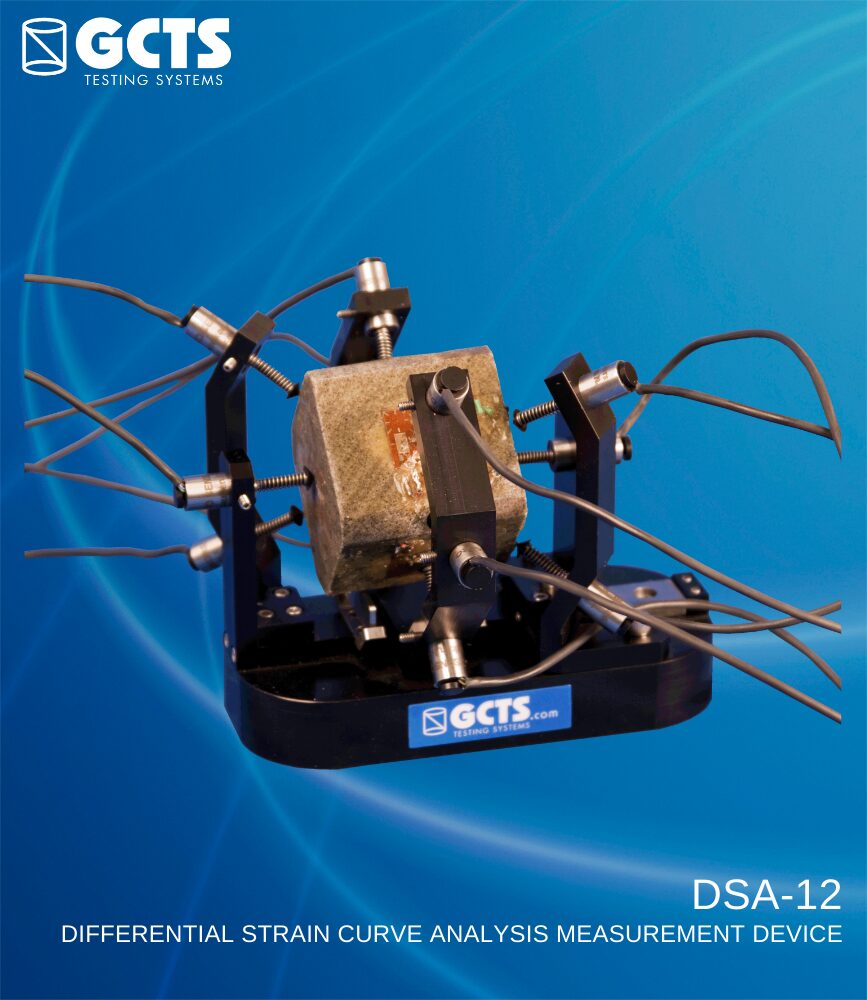Differential Strain Curve Analysis
The GCTS Differential Strain Curve Analysis Measurement Device (DSA-12) is designed to test cubical rock specimens under hydrostatic conditions in order to determine the in-situ stress state. The results obtained using the DSA-12 allow for characterization of the distribution of crack porosity with crack closure pressure as well as the crack orientation as a function of crack closure pressure amongst other parameters.
The DSA-12 comes with twelve high precision LVDT’s vented for high pressure with cables to connect to electrical feed-throughs inside a triaxial cell.
GCTS offers a hydrostatic triaxial cell (HTRX-DSA) for use with the DSA-12. The HTRX-DSA features stainless steel construction with a 140 MPa pressure capacity, 16 feed-through lines for in-vessel instrumentation, 3 fluid pressure connectors (cell, drain and bleed ports), and a 100 mm (4 inch) inside diameter.
DSA-12
HIGHLIGHTS
- Includes twelve (12) LVDT sensors for strain measurement
- Support base and LVDT holders with high-quality anodized aluminum construction
- Accommodates cubical rock samples with maximum dimensions of 50 mm x 50 mm x 50 mm
- Stainless steel sliding rail for fast and precise positioning of sensors onto samples with different dimensions
- Interchangeable flat or pointed LVDT ends for suitable contact with the specimen
- Optional hydrostatic high pressure triaxial cell with a pressure capacity of 210 MPa (30,000 psi)
- Optional upgrade to high-temperature LVDTs for testing up to 200oC
- Note: Requires signal conditioning and data acquisition unit for the sensors





